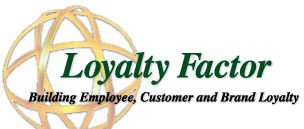The quality of a person’s life is in direct proportion to their commitment to excellence, regardless of their chosen field of endeavor. Vince Lombardi
Sales & Marketing Management - Healthy Competition - Reward your staffers for being physically fit
April, 2006
Sales & Marketing Management
By Julia Chang
A salesperson's life isn't very conducive to good health. Poor diet and lack of exercise come with frequent business travel, fatigue comes from working late, and wining and dining is needed to entertain clients. While these may seem like necessary sacrifices, the truth is that they can lead to poor employee health. And that is bad for business. According to CCH Inc., a provider of employment-law information based in Riverwoods, Illinois, last-minute absences due in part to illness and stress cost companies about $660 per employee last year.
"If you are physically fit, then you are more likely to be mentally fit," says Dianne Durkin, president of Loyalty Factor, a training and consulting firm specializing in worker and customer loyalty, based in Portsmouth, New Hampshire. "You are likely to project positive feedback to customers. And customers want to do business with positive people."
It's no wonder, then, that 62 percent of companies offered wellness programs or resources in 2005, according to the Society for Human Resource Management, based in Alexandria, Virginia. And some forward-thinking employers are even offering incentives to promote good health—a tactic that may especially appeal to a salesperson's competitive spirit.
At Polar, a manufacturer of heart-rate monitors and sports instruments, a fitness challenge it offered to employees served a dual purpose: to encourage good health and to educate workers on its technology, says Marcelo Aller, a training resource specialist in Polar's office in Lake Success, New York, who trains internal salespeople and outside channels on Polar's products.
Last year, around 40 employees competed to see if they could lower their "BodyAge," a Polar health assessment that accounts for such factors as cardiovascular health, flexibility, strength, and nutrition, all in order to come up with a person's biological (as opposed to chronological) age.
Each quarter, the top three employees with the best health-assessment results were given such incentives as gift cards and iPod Shuffles. The grand-prize winner was a salesperson who received a three-day, all-expenses-paid trip to a Las Vegas spa for showing the greatest percentage of change in BodyAge.
"Memorizing what our product does is one thing, but feeling and understanding it is a whole other aspect," Aller says, of Polar's level of internalizing the health message.
Offering incentives can also help ease resistant employees into making healthy choices. When Dole Food Company, the produce firm based in Westlake Village, California, instituted a company-wide wellness initiative—it included eliminating the unhealthiest cafeteria foods—there was some employee grumbling. But Dole offered discounts for healthier menu items, and awarded "Dole Dollars" for participating in activities such as yoga classes, health seminars, and cooking classes. These dollars could be redeemed for exercise equipment, yoga mats, and gift certificates at organic food stores.
But perhaps the best reward was improved health. A group of 50 volunteers were monitored, and in six months they saw positive changes in body fat, and levels of good and bad cholesterol. "People were very attached to their bacon cheeseburgers, so there was some whining in the beginning," says Jennifer Grossman, director of the Dole Nutrition Institute, the company's nutrition advocacy arm. "But now people have changed their lifestyles, and you can see the difference." —Julia Chang



